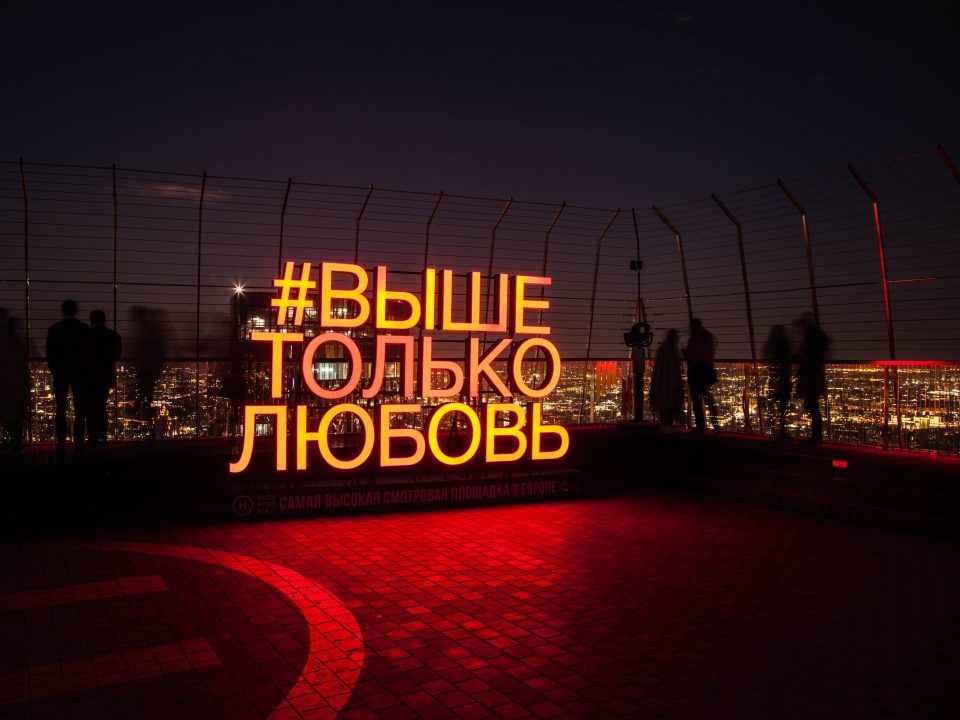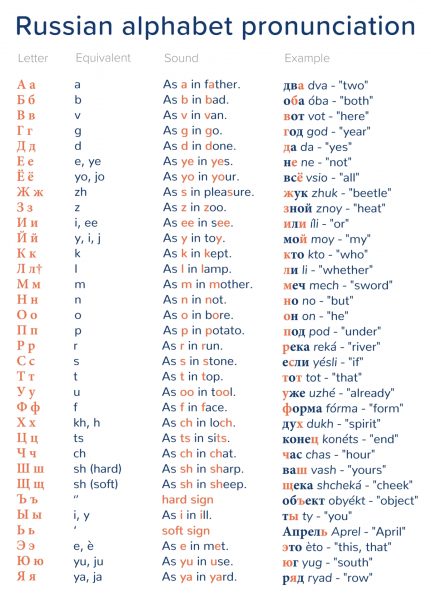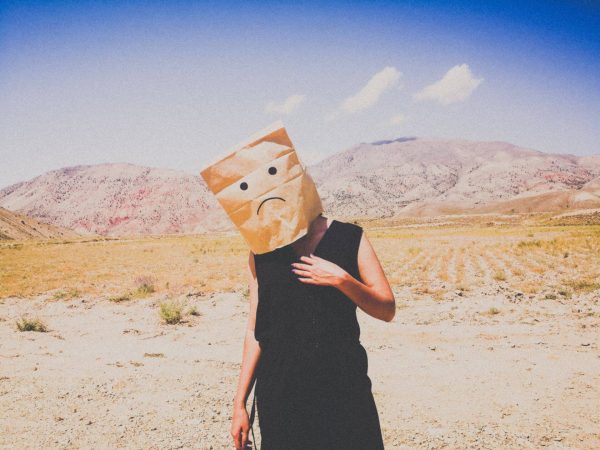The Benefits of Learning a New Language in Your Senior Years
Are you ever too old to learn a new language? Experts say no.
The Cyrillic script won’t be so scary after you get to know it. Here’s how to pronounce the 33 letters of the Russian alphabet.

Although it may seem a bit daunting in the beginning, the Russian alphabet is not the hardest alphabet in existence (I’m looking at you, Japanese). Consisting of 33 letters – just 7 more than the Latin alphabet – it uses the Cyrillic script to write the Russian language. And you know what’s the best thing about it? Almost all the words in Russian can be pronounced the same way they are written.
To put it simply, once you master the Russian alphabet, you’ll know how to pronounce the majority of the Russian words. So let’s uncover the mysteries of this alphabet together so you can move on to more important things like… learning Russian with Mondly.
As you already know, Russian is an East Slavic language and one of the world’s major languages: it is one of the six official United Nations languages and the 8th most spoken language in the world with a total of 260 million speakers. Moreover, Russian the official language of Russia, Belarus, Kazakhstan and Kyrgyzstan and the unofficial lingua franca in Ukraine and many other former Soviet countries.
Russian and the other East Slavic languages (Ukrainian, Belarusian) were not very different from each other until the Middle Russian period (late 13th century to the 16th century). As a matter of fact, the term “Old Russian” is generally used to describe the East Slavic languages in use before the Middle Russian period.
Russian has been greatly influenced by Old Church Slavonic and – since the westernizing policies of Tsar Peter I the Great in the 18 century – by the languages of western Europe. Then, the 19th-century poet Aleksandr Pushkin determined the further development of the Russian language we know today. His writings, in which he combined the colloquial and Church Slavonic styles, were decisive in establishing the best style for literary use.
The Cyrillic script is the national script in various Slavic-, Turkic- and Iranic-speaking countries in Eastern Europe, the Caucasus, Central Asia, and Northern Asia.
The Early Cyrillic script was commissioned by the Bulgarian Tsar Simeon I the Great in the 9th century AD to replace the Glagolitic script and became official shortly after, in 893. It is derived from the Greek uncial script, augmented with letters from the older Glagolitic alphabet and was named in honor of the two brothers, Saints Cyril and Methodius, who created the Glagolitic alphabet.
The Cyrillic script used in Russia was heavily reformed in the early 18 century by Peter the Great. Several archaic letters were completely removed and others were personally designed by Peter the Great himself. Thus, the updated letters became closer to those of the Latin alphabet.

There are 33 letters in the Russian alphabet. 10 vowels (а, э, ы, у, о, я, е, ё, ю, и), 21 consonants (б, в, г, д, ж, з, к, л, м, н, п, р, с, т, ф, х, ц, ч, ш, щ, and the consonant й which is sometimes a semivowel) and 2 pronunciation signs (the “soft sign” ь and the “hard sign” ъ).
This is the dictionary order of the Russian alphabet: А, Б, В, Г, Д, Е, Ё, Ж, З, И, Й, К, Л, М, Н, О, П, Р, С, Т, У, Ф, Х, Ц, Ч, Ш, Щ, Ъ, Ы, Ь, Э, Ю, Я.
If we were to compare the Russian alphabet to the English alphabet, we would have four groups of letters: letters that look and sound (almost) the same as in English, letters that sound the same but look different, letters that look the same but sound different and letters that have no English equivalent whatsoever.
*palatalization – pronouncing a consonant in a way in which part of the tongue is moved close to the hard palate.
Phew! That may seem a bit overwhelming right now, but you’ll eventually get the hang of it. To help you even more, we put together a table so you can have all this information “at a glance”. Here’s the pronunciation of the Russian alphabet in a nutshell:

Russian is definitely not the hardest language you can study. As you already saw, once you get to know it, the Russian alphabet seems quite friendly. Languages like Chinese, Japanese, Korean or Arabic, on the other hand, are way harder to master. Besides, once you learn the alphabet, you will already be able to read in Russian – a great boost for your motivation!
So let’s see what are some general rules and characteristics of the Russian language to help you get started:
It can be really tricky to master Russian pronunciation if you don’t actively live in Russia. But with Mondly, the award-winning language learning app, you’ll teach yourself Russian using a unique, fast and highly efficient learning method.
Using a conversation-focused curriculum organized into bite-sized lessons and advanced technologies like chatbots with speech recognition, Mondly helps you make the connections yourself and speak like a true Russian fast.
Get Mondly now and speak your first Russian words today!

Are you ever too old to learn a new language? Experts say no.

Bad at languages? Unlock your inner polyglot by following these powerful language learning tips.

When learning a new language you are faced with a choice: dip your toes or follow the immersion route. Which one will you choose?
Thanks for the info, ive been wanting to learn russian for a long while now!
Do Russians say “Tee tridtsat chetire” or “Tay tridtsat chetire”?
Hi Robert 👋
How do you write that using the Cyrillic script?
If you are interested in learning how to count in Russian, you can check out our article on Russian numbers.
Happy learning!
neither. It’s “Teh Treedsat’ chetireh”
Yeah, [Teh Treedsat’ chetireh].
If you mean Soviet World War II tank T-34
It is really helpfull.
It is helpfull.
How would the combination OE be pronounced in Russian? Would it be different in Ukrainian? My ancestors lived in what is now Ukraine for many generations, and now our name is pronounced in a strange way. I’m wondering if it is a result of the time they spent living there.
Hi Jordan 👋
It depends if the ‘o’ is stressed or not. If it’s stressed, it is closer to /oye/. If it’s not, it is closer to /aye/ or even /’ye/.
If you ask me, I’m sure that living there must have had an influence on the pronunciation of your name.
Thanks Diana. This was quite helpful. Our current pronunciation is similar to /aye/. Toews becomes Taves. The v comes from the German roots. The a sound must come from the Ukrainian/Russian influence.
Am very happy to come across with Mondly,am an international student from Gambia. I came to study in Belarus whereby I have to study the Russian language first,
So I believe this app will really help me throughout my studies.
Good luck in your studies!
In German when 2 vowels are together, the second vowel speaks. OE sounds like an A.. adding the W with the V sound after it as you said, is German influence.
Thanks to Mondly, I’ve now learnt Russian
благодаря mondly, теперь я выучил русский!
Wow thank you for your information this time I’m the learner’s in Russian language so that I need the to teach.so once again thank you
When I took Russian in high school MANY years ago (late 1960s) I could swear we were taught to put a bar diacritic over a cursive “m” but I’ve never seen this mentioned anywhere. Is it my feeble memory from aging or maybe a regional variant or other Slavic language? Pozhalsta, reply to my email so don’t miss a response. Spaseebo Bolshoi,
Ken Kenovich
Hi Ken, I think that’s still the case, but only in handwritten Russian. It is *another* way to write the small letter “t”.
Hi, as you’ve menshioned it was in 1960’s and it’s not the thing that should always be used. So it’s rarely used in written russian nowadays and not every russian even knows about it.
I am staring out with Mondly but want to learn Russian with the Russian alaphabet. So far I have only seen the words spelled in the american alphabet
Hi there 👋
You can switch to the Russian alphabet by tapping on the button in the upper right corner.
I hope this helps!
Hi, if you mean tank “Т 34”, it’s pronounced as “Te tridtsat chetyre” or “тэ тридцать четыре”.
how about these characters?;
І
Ѳ
Ѣ
Ѵ
Є
Ѥ
Ѕ
Ꙋ
Ѡ
Ѿ
Ѫ
Ѧ
Ѭ
Ѩ
Ѯ
Ѱ
Hi, those are not modern russian.
Hi.
Any chance you have that alphabet image in higher resolution ? I want to print this as a gift for my friend who wants to learn Russian. Заранее спасибо.
Hi Mikhail,
I just sent you an e-mail with the image at a higher resolution.
Happy learning!
I am now learning Russian and I somewhat like this app
Hey!! i am from India & its completely different language for me to learn could you please suggest from where should i start as the alphabets & pronunciation is different from normal English
alphabets
Great explanation of the alphabet and pronunciation. Thank you!!
May I please have that alphabet image in a higher resolution?
Olga
Hello, please can you email me the alphabet images in a higher resolution. Thank you. Pia
Hello please can I have a copy of the Russian alphabet in higher resolution. Many thanks, Pia
Hi Pia! I just sent you an email with it. 🧡
I’d like to learn RU jist bc I wanna go to “Republika Moldova” next summer. Do they speak Russian or can I go well woth my main language (Romanian) anyway?
Thanks!
Hi, I have the premium course. I can’t find a lesson that teaches the Cyrillic alphabet?
You must be very smart Diana. I love how you’ve explaind all this. I am Australian and I don’t know anything about this language, but it sure sounds interesting. ”Ta.”
You are too kind, Jonathan! I’m very glad I could help. ❤️
Hello please can I have a copy of the Russian alphabet in higher resolution. Many thanks
Hi Danielle! Does this work for you? https://imgur.com/a/h4nWjuT